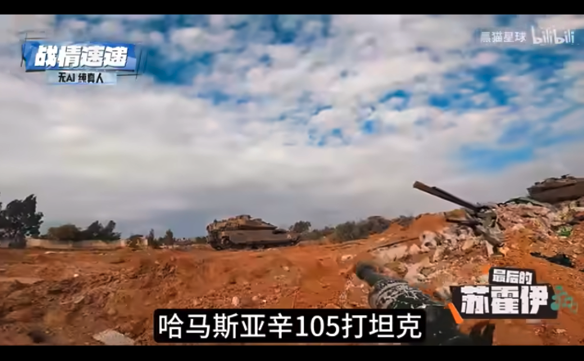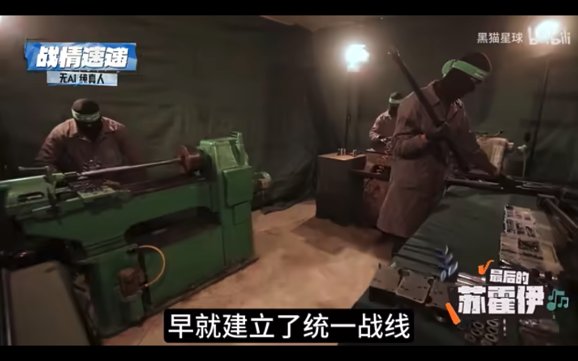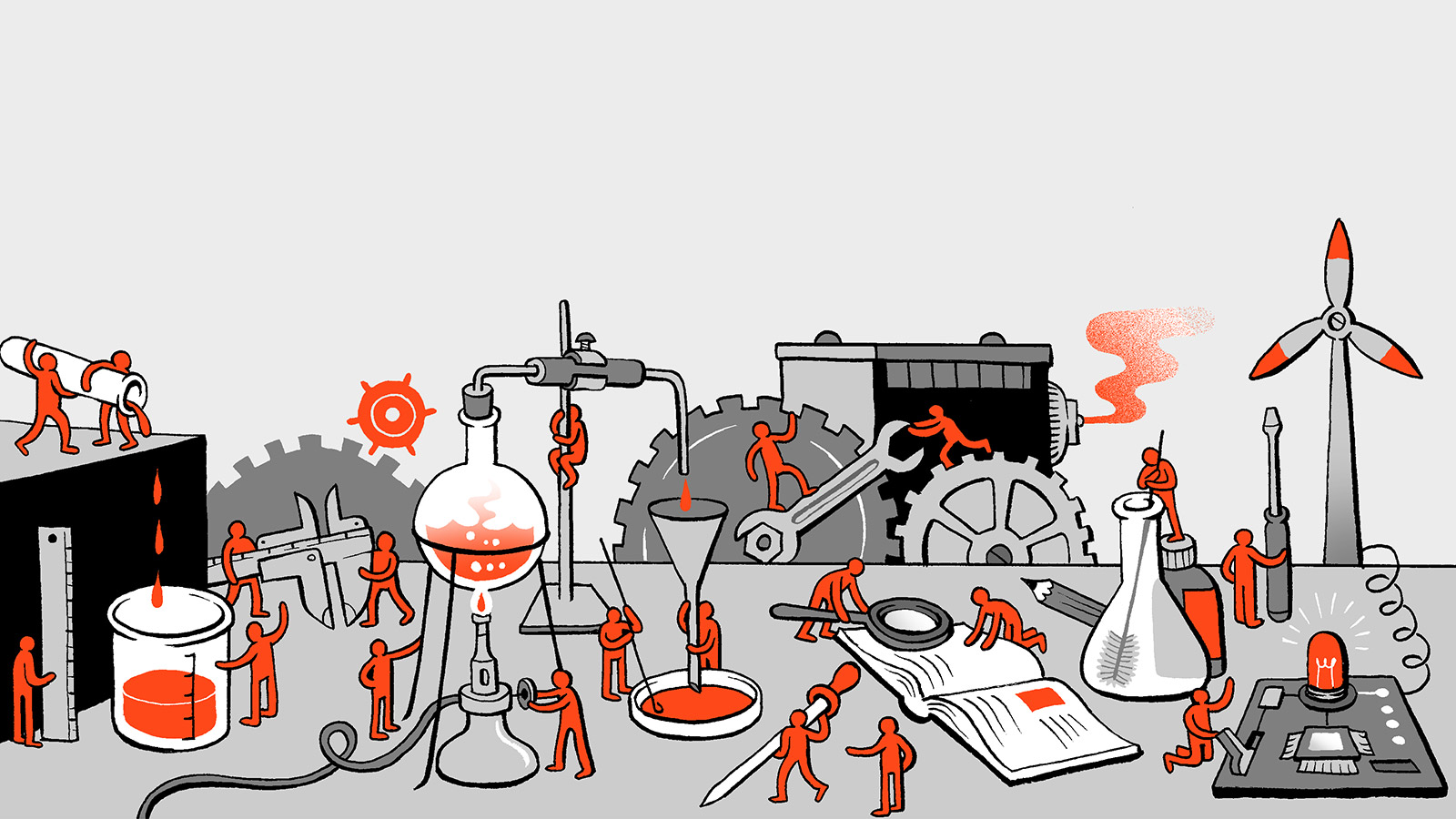Smashing Walls, Building Firewalls, and Breaking the Digital Siege
By Charles Xu


On October 7, 2023, the Palestinian resistance in Gaza launched Operation Al-Aqsa Flood—a mass breakout from the open-air concentration camp in which 2.3 million people had been confined by seventy-five years of Zionist colonialism and sixteen years of unrelenting siege. In a combined arms operation executed simultaneously at over thirty distinct locations, the resistance overwhelmed Israel’s Iron Dome with rocket fire that “drowned out the sound of gunfire from Hamas snipers, who shot at the string of cameras on the border fence, and explosions from more than 100 remotely operated Hamas drones, that destroyed watchtowers.”1 After the Palestinian resistance breached the wall, so precise was their intelligence that within an hour they had overrun eight military bases, including the one housing Israel’s elite signals intelligence Unit 8200.2 At every location their first step was to cut off communications, in a poetic reversal of the blackouts Israel has so routinely inflicted on Gaza before and since.3
Those blackouts were just one manifestation of Israel’s near-total control over and intentional de-development of Gaza’s communications system. As Nour Naim notes, “[t]he dependence of the Palestinian infrastructure on Israel’s infrastructure, whether that entails the internet, landlines, or cellular communications, has given Israel as an occupying power enormous monitoring capabilities.”4 In order to conceal the years of preparation that laid the groundwork for October 7, the resistance adapted accordingly in a way that exploited Israel’s own narcissistic techno-solutionism.5 As the Financial Times reports, “Hamas has maintained operational security by going ‘stone age’ and using hard-wired phone lines while eschewing devices that are hackable or emit an electronic signature.”6
Long before October 7, Gaza was by necessity a site of astounding technical ingenuity and resourcefulness cultivated by a highly educated population already enduring near-unbearable siege conditions. Much has been written, in these pages and elsewhere, about the Palestinian people’s creative innovations in such varied fields as medicine, agroecology, and civil engineering in the blockaded Strip.7 At the time of writing, nine months of Zionist genocide, scholasticide, and epistemicide have seemingly wiped out all traces of this extraordinary material progress and the educational infrastructure in which it was nurtured.8
Amidst such horrors it can be easy to lose sight of one crucial fact: the Palestinian liberation struggle, like all others, is forced by necessity to divert a substantial fraction of its meager resources away from “peaceful” development and toward self-defense. Indeed, the latter is the very condition of possibility for the former. Without the heroic armed resistance on full display since October 7, and its antecedents dating back over a century, Palestinians would long ago have been fully expelled from their native land. As such, it is incumbent on the Palestine solidarity movement in the West to understand the resistance not only as a military and political actor, but also as a technological protagonist in its own right, practicing a bona fide “science for the people” every bit as crucial as the doctors, scientists, engineers, and educators who help form its popular cradle.
With that in mind, this article focuses on two intentionally under- or misreported facets of the current conjuncture:
- The Indigenous technological innovations developed by the Palestinian resistance under siege conditions in Gaza, particularly in the fields of weaponry, counterintelligence and counter-surveillance, and information warfare.
- How these are enabled, reinforced, and amplified by the Global South’s project of sovereign development and delinking from Western digital monopolies, most fully exemplified by China—a target of renewed Western opprobrium since October 7.
Both phenomena are manifestations, under vastly different circumstances, of what Max Ajl describes in Part I of his “Palestine’s Great Flood” series as a “dialectical relationship between technological upgrading, defensive industrialization, and armed defensive capacity.”9 He concentrates in particular on the example of Iran and its centrality to the regional Axis of Resistance militarily confronting Zionism and US imperialism:
Internally, since the revolution, Iran has embarked on continuous—if frustrated—efforts towards endogenous industrialization, the technological basis for an increasingly self-reliant military-defense capacity…This, in turn, has been the foundation for regional sharing of technology, alongside operational training, dispatch of its elite forces to assist in the defense or reclamation of state sovereignty within nearby Arab states, and sharing of technical and logistical expertise.10
This logic, combining Indigenous innovation and manufacturing with the free “horizontal” transfer of technical know-how, impressed itself even more firmly in Gaza under Israel’s post-2007 blockade. In Part II of the same series, Ajl lays out in harrowing detail how the siege crystallized into a “scientific program of humanitarian counter-insurgency, meant to damage but not destroy the Palestinian population which Hamas had to administer and caretake.”11 He goes on to note:
Against this tableau of amputated life, Hamas and the other armed factions laboriously built up an armed capacity. While the Gaza Strip remained under external military occupation, it had some internal sovereignty…Through 2011, the armed elements relied on Syrian, Hezbollah, and Iranian backing, ranging from funds to arms transfers, logistics, training, and sharing technical blueprints for homegrown weapons manufacturing.12
The seeds planted in those first few years of the blockade—which as the Palestinian Youth Movement points out, rendered Gaza both an open-air prison and (seemingly paradoxically) the “only liberated Palestinian territory”—have since sprouted prodigiously.13 Indeed, since October 7 the Qassam Brigades (the armed wing of Hamas) have released a near-daily stream of videos displaying an impressive range of Indigenously developed weaponry.14 Most feature their use in active combat, while some actually show selected aspects of the development, manufacture, and/or testing process.15 Perhaps the most paradigmatic example—and by far the most visible from the privileged standpoint of Israeli settlers, especially before October 7—is the dramatic rise in sophistication of Hamas’s rockets. These have evolved from the first-generation Qassam Q-12, which had a maximum range of around twelve kilometers, to the recently unveiled Ayyash-250 whose 250-kilometer range puts essentially all of occupied Palestine within reach.16
Other Indigenously produced weapons have made frequent appearances in ground combat; most have been ingeniously adapted based on prior designs from past and present allies of the Palestinian resistance. The Yassin anti-tank rocket-propelled grenade, for example, is based on a modified Soviet model and features in almost every Qassam combat video.17 The Shawaz explosively formed penetrator, specially designed to penetrate Israeli vehicles’ reinforced armor, is believed to be inspired by devices used by the Iraqi resistance against the 2003-2011 US occupation.18 And the al-Ghoul sniper rifle, whose manufacture and testing feature prominently in a Qassam video from late December, is based on the Iranian AM50 Sayyad design.19
Great historical significance is attached to many of these weapons’ names. Izz ad-Din al-Qassam, the revolutionary cleric who initiated the Great Revolt of 1936-1939, gave his name both to the Brigades and to several generations of their iconic rockets. Sheikh Ahmed Yassin co-founded Hamas in 1987. Yahya Ayyash and Adnan al-Ghoul were both leading engineers who pioneered the Qassam Brigades’s bomb and missile development programs, martyred in 1996 and 2004, respectively.
Indeed, the organization’s engineering prowess is no accident: as Abdaljawad Omar points out, it was actually a product of their religious conservatism in a way that may strike Western observers as paradoxical, given the strong post-Enlightenment association of science and technology with secularism.20 In the Palestinian context, Hamas regarded the humanities and social sciences (with some reason) as vectors of Western influence and bastions of the political left, and thus preferentially steered its student cadres into engineering and the “hard” sciences. This remarkably prescient decision preceded by decades the Hamas takeover and Israeli siege of Gaza, which respectively enabled and necessitated the development of such an expansive Indigenous weapons industry.
Another constant throughline in the history of Gaza’s homegrown arms industry is the ingenious sourcing of materials repurposed from former and current colonial foes. Specifically, a 2020 Al-Jazeera documentary revealed that the Qassam Brigades have routinely recycled unexploded shells leftover from previous Israeli bombing campaigns, and even from wrecked British warships that were sunk off the coast of Gaza during World War I.21 They have also produced rocket casings using pipes that were installed during the pre-2005 occupation to siphon water into Israel from Gaza’s heavily depleted aquifer.22 Per a recent report in the New York Times, Israeli intelligence officials believe that “unexploded ordnance is a main source of explosives for Hamas,” particularly those used to devastating effect on October 7.23 Between this recycling and outright expropriation from Israeli bases, they admit, “we are fueling our enemies with our own weapons.”24
These advances in resistance arms production—impressive as they were, especially under Gaza’s extreme conditions of technological dependency and de-development even before October 7—obviously could not come close to matching the enemy. Indeed, Israel has long distinguished itself not only as the region’s only nuclear-armed state, and by far the world’s largest recipient of US military aid, but also as a self-styled “start-up nation” at the cutting edge of high-tech surveillance, information warfare, counterinsurgency, and the automation of mass death.25 Just as crucial to the success of Al-Aqsa Flood as Hamas’s own capabilities were their efforts to conceal them, and to neutralize Israel’s advantages by cultivating a false sense of security in its own unassailable technological dominance.
This extreme asymmetry forces the Palestinian resistance and its regional allies to adopt guerrilla methods not just in arms development, but also in battlefield tactics, popular mobilization, and—most pertinently for the global solidarity movement—in the propaganda war. As Max Ajl notes, the Lebanese resistance group Hezbollah dealt Israel a historic defeat in 2006 “through logistical, technological, and organizational upgrades alongside a pronounced up-take of people’s war.”26 Yemen’s Ansarallah (also known as the Houthis) likewise “understand themselves as fighting a mass mobilizing peoples’ war, based on ideological hardening of troops and sophisticated tactics to neutralize technological superiority.”27
Ajl further points out that at the epicenter of the Axis of Resistance, Hamas itself similarly “broke from the top-heavy command-and-control structures of conventional armies toward decentralized ‘guerrilla’ people’s war…Through emulation and training, it has drawn on Hezbollah, which had long adopted a model of guerrilla confrontation with clear affinities to Asian national liberation struggles.”28 Those affinities, echoes, and direct historical linkages across the Asian continent have been frequently evoked since October 7, particularly in relation to the victorious liberation struggles of Vietnam and China against US and Japanese imperialism, respectively.29
Such organic diffusion of the theories and practices of people’s war may appear today as a distant memory relegated to a bygone era of globally coordinated national liberation struggles. It has after all been decades since either China or Vietnam—once near-universal reference points for the international revolutionary left—has experienced war of any kind or acted as an unambiguously anti-systemic force. Modern China in particular projects an image of technological hyper-modernity, challenging and increasingly surpassing Western dominance in such fields as green energy, artificial intelligence, and 5G/6G communications, rather than that of semicolonial underdevelopment. But in truly dialectical fashion, this drive for technological sovereignty has become a major asset for Palestine in the contest for global public opinion, and enabled a revival of popular revolutionary and anti-imperialist consciousness in China itself.
Indeed, since October 7 the most enduring strain of Sinophobic fear-mongering in the Western media has specifically centered on this phenomenon, especially the profusion of pro-Palestine content on TikTok.30 Such narratives are targeted directly at China’s remarkably successful project of safeguarding its digital sovereignty by building the so-called “Great Firewall,” delinking from Western platform monopolies, and carefully cultivating its own domestic platforms especially for social media. The University of Bonn’s Center for Advanced Security, Strategic and Integration Studies ranks China second to last—just ahead of the United States—in its index of “Digital Dependence” on foreign countries for “[information technology] trade, communication infrastructures, and intellectual property.”31 In mainstream Western media these features of the Chinese internet are almost universally derided as the creations of a paranoid and totalitarian surveillance state, with an all-encompassing censorship apparatus that enjoys near-total control over online public expression.
This narrative stems from seething resentment that China has created a media and information environment for over a billion internet users that is relatively insulated from Zionist hasbara and entirely free from Western platform censorship.32 This general phenomenon also manifests to some extent outside China, with Palestinian resistance factions like the Qassam Brigades and Saraya al-Quds enjoying relatively unrestricted access to the Russia-based Telegram as a platform for their communications.33 Behind the Great Firewall, the Chinese internet is therefore awash with amateur and expert analyses of Palestinian military tactics, analogies to China’s own War of Resistance against Japan, tributes to the sacrifice of US airman Aaron Bushnell, and moving comparisons of the US student intifada to the May Fourth Movement of 1919 that set China on the long road to revolution.34
Having secured those revolutionary gains, and free to pursue its own developmental path, China today is (perhaps inadvertently) helping to create the digital infrastructure for Palestine to secure victory in the global narrative war. Compounded by the success of the resistance on the physical battlefield—secured in no small measure by technical innovation under the most hostile conditions imaginable—this propaganda victory is leading Zionist colonialism into near-terminal crisis. When the carnage in Gaza finally ends, may Palestinians in turn see in China a vision of their own future: a sovereign people whose boundless ingenuity is free at last to truly “make the desert bloom,” having liberated their land through armed struggle from the river to the sea.
The author excerpted and heavily adapted this article from a longer piece published by Qiao Collective in March 2024.
Notes
- R.U.P.E., “Gaza 2023 – High-tech War Revisited,” Research Unit for Political Economy, November 14, 2023, https://rupeindia.wordpress.com/2023/11/14/gaza-2023-high-tech-war-revisited/.
- R.U.P.E., “Gaza 2023.”
- Jessica Corbett, “Gaza Internet Blackout Conceals Israel’s Human Rights Violations—And Is Itself One,” Common Dreams, January 18, 2024, https://www.commondreams.org/news/blackout-in-gaza.
- Nour Naim, “Artificial Intelligence as a Tool for Restoring Palestinian Rights and Restoring the Quality of Life,” in Light in Gaza: Writings Born of Fire, ed. Jehad Abusalim et al. (Chicago: Haymarket Books, 2022), 113.
- “Another word for this mythology is techno-solutionism, a worldview that took Israel’s military and political elite by storm at the turn of the twenty-first century, when “technology rather than occupation” became official IDF policy.” From Sophia Goodfriend, “Blunt Force,” The Baffler, October 19, 2023, https://thebaffler.com/latest/blunt-force-goodfriend.
- Mehul Srinistava, John Paul Rathbone, and Raya Jalabi, “Military briefing: How Hamas fights,” Financial Times, October 30, 2023, https://www.ft.com/content/913d366e-0ace-4463-a004-d293aa49c673.
- “Science Under Occupation,” Science for the People 23, no. 1 (Spring 2020).
- Coined by Prof. Karma Nabulsi to denote the “systematic destruction of Palestinian education by Israel. From “International Actions Against Scholasticide,” Scholars Against War, February 14, 2024, https://scholarsagainstwar.org/toolkit/; “Epistemicide can be broadly defined as the destruction of knowledge systems and the knowledge that they generate.” From Abdullah Moaswes, “The Epistemicide of the Palestinians: Israel Destroys Pillars of Knowledge,” Institute for Palestine Studies, February 2, 2024, https://www.palestine-studies.org/en/node/1655161.
- Max Ajl, “Palestine’s Great Flood: Part I,” Agrarian South: Journal of Political Economy 13, no. 1 (2024): 80, https://doi.org/10.1177/22779760241228157.
- Ajl, “Palestine’s Great Flood: Part I,” 74
- Max Ajl, “Palestine’s Great Flood: Part II,” Agrarian South: Journal of Political Economy 13, no. 2 (2024): 192, https://doi.org/10.1177/22779760241253788.
- Ajl, “Palestine’s Great Flood: Part II,” 193.
- Sina Rahmani, “Demystifying Gaza w/ Palestinian Youth Movement,” November 21, 2023, in The East is a Podcast, interviewed by Sina Rahmani, published by The East is Podcast, podcast, audio, 1:12:56, Naye Idriss and Miriam Osman, interview by Sina Rahmani, The East is a Podcast, November 21, 2023, https://eastisapodcast.libsyn.com/demystifying-gaza-w-palestinian-youth-movement.
- Jon Elmer, “Watch: Six months of Palestinian resistance battles, tactics and weapons,” Electronic Intifada, April 7, 2024, https://electronicintifada.net/blogs/jon-elmer/watch-six-months-palestinian-resistance-battles-tactics-and-weapons.
- Elmer, “Watch.”
- Jon Elmer (@jonelmer), “Qassam’s rocket arsenal. Named after key founders and commanders, beginning with Izz al-Din al-Qassam himself; in order, Ibraham al-Maqadma; Ahmed Jabari; Raed al-Atar; Muhammad Abu Shamala; Abdel Aziz Rantissi; and Yahya Ayyash. [Qassam Brigades 31/12],” X/Twitter,, December 31, 2023, 8:04 p.m., https://x.com/jonelmer/status/1741626492960813306.
- Jon Elmer, “How Gaza-made weapons are impacting the battle against Israeli armored vehicles,” Electronic Intifada, November 14, 2023, https://electronicintifada.net/blogs/jon-elmer/how-gaza-made-weapons-are-impacting-battle-against-israeli-armored-vehicles.
- Ali Halawi, “Hamas unveils groundbreaking armor piercing EFP devices in Jenin,” Al Mayadeen English, July 15, 2023, https://english.almayadeen.net/news/politics/hamas-unveils-groundbreaking-armor-piercing-efp-devices-in-j.
- @AryJeay, “Video shows the local manufacturing of the Qassam ‘Ghoul’ sniper rifle, which is derived from the Iranian AM50 Sayyad,” X/Twitter, December 20, 2023, 1:18 p.m., https://x.com/AryJeay/status/1737537871966302685.
- Abdaljawad Omar, “The Making of Palestinian Resistance with Abdaljawad Omar,” January 11, 2024, in Millenials Are Killing Capitalism Live!, interviewed by Jared Ware, published by Millennials Are Killing Capitalism Live!, podcast, video, 2:10:52, https://www.youtube.com/watch?v=2Lc9S1HmNkU.
- Al Jazeera English, “Gaza, Hamas, and the New Middle East,” Al Jazeera English, published December 9, 2020, video, 46:54, https://www.youtube.com/watch?v=od0KzQN4TpQ.
- Middle East Monitor, “Hamas recycles shells from British ships sunk off Gaza during WWI,” Middle East Monitor, September 15, 2020, https://www.middleeastmonitor.com/20200915-hamas-recycles-shells-from-british-ships-sunk-off-gaza-during-wwi/.
- Maria Abi-Habib and Sheera Frenkel, “Where Is Hamas Getting Its Weapons? Increasingly, From Israel,” New York Times, January 29, 2024, https://www.nytimes.com/2024/01/28/world/middleeast/israel-hamas-weapons-rockets.html.
- bi-Habib and Frenkel, “Where is Hamas.”
- Jonathan Masters and Will Merrow, “U.S. Aid to Israel in Four Charts,” Council on Foreign Relations, May 31, 2024, https://www.cfr.org/article/us-aid-israel-four-charts.; Yarden Katz, “How Microsoft is invested in Israeli settler-colonialism,” Mondoweiss, March 15, 2021, https://mondoweiss.net/2021/03/how-microsoft-is-invested-in-israeli-settler-colonialism/.
- Max Ajl, “Palestine’s Great Flood: Part I,” Agrarian South: Journal of Political Economy 13, no. 1 (2024): 78, https://doi.org/10.1177/22779760241228157.
- Ajl, “Palestine’s Great Flood: Part I,” 79.
- Max Ajl, “Palestine’s Great Flood: Part II,” Agrarian South: Journal of Political Economy 13, no. 2 (2024): 195, https://doi.org/10.1177/22779760241253788.
- 29. Evyn Lê Espiritu Gandhi, “Palestine is Today’s Vietnam,” Social Text: Periscope, December 7, 2023, https://socialtextjournal.org/periscope_article/palestine-is-todays-vietnam/; Charles Xu, “The Gates of the Great Continent: Palestine, China, and the War for Humanity’s Future,” Qiao Collective, March 7, 2024, https://www.qiaocollective.com/articles/palestine-china.
- Mike Gallagher, “Why Do Young Americans Support Hamas? Look at TikTok,” The Free Press, November 1, 2023, https://www.thefp.com/p/tik-tok-young-americans-hamas-mike-gallag. Gallagher was a Republican congressman who chaired the House Select Committee on Strategic Competition between the United States and the Communist Party of China and introduced H.R. 7521, the Protecting Americans from Foreign Adversary Controlled Applications Act, better known as the TikTok ban.
- Digital Dependence Index, “Measurement of Digital Dependence,” Center for Advanced Security, Strategic and Integration Studies, accessed July 21, 2024, https://digitaldependence.eu/en/.
- Sam Hamad, “Understanding Hasbara: Israel’s propaganda machine,” The New Arab, November 18, 2023, https://www.newarab.com/news/understanding-hasbara-israels-propaganda-machine.
- Al Mayadeen English, “Telegram ban: Android seeks to silence Palestinian Resistance,” Al Mayadeen English, October 24, 2023, https://english.almayadeen.net/news/politics/telegram-ban:-android-seeks-to-silence-palestinian-resistanc.
- 黑猫星球 (Black Cat Planet), profile on Bilibili, https://space.bilibili.com/11146869; @nellodee, “The video almost immediately made it onto Chinese social media platforms. Hundreds of comments calling Bushnell a hero, principled, courageous. The first comment here says ‘The US has conscientious people too,’” X/Twitter, February 24, 2024, 4:34 p.m., https://x.com/nellodee/status/1762229686271348956; Vijay Prashad, “The Students Will Not Tolerate Hypocrisy: The Eighteenth Newsletter (2024),” The Tricontinental: Institute for Social Research, May 2, 2024, https://thetricontinental.org/newsletterissue/students-for-palestine/.




